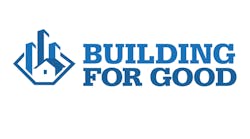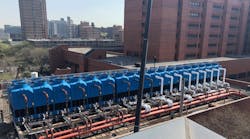Over the last few decades, engineers have become increasingly reliant on computer applications to avoid human error in the performance of complex calculations. Being overly dependent on computer programs may lead to errors itself and expose engineers to tremendous liability, however.
Types of Computer Errors
There are two main types of computer errors: application and program.1
Application errors include data-entry mistakes and misapplication of software.1 In the case of Carbotrade, S.P.A. v. Veritas, an engineer applied a PC-based simulator of vessels in fluids and fluids in vessels without a thorough understanding of the software and the concept of wave-induced bending moments.2 The engineer was found fully responsible for the resulting failure because he could have used more suitable software.
Program errors are caused by computer shortcomings, such as bugs and inappropriate algorithms.1
According to an American Society of Civil Engineers (ASCE) Task Committee on Software Evaluation report, 58 percent of computer errors can be attributed to the user, 25 percent the software, 13 percent the hardware, and 4 percent “other.”3 In this case, user error is the same as application error, and hardware and software errors are equivalent to program errors. According to the report, user inexperience is the leading cause of computer errors.3
Application errors are similar to errors in calculations performed by hand. The engineer no doubt is liable. Program errors, on the other hand, are the result of computer-related inadequacies. In addition to the engineer, the computer programmer or vendor may be liable.
Types of Engineering Failures
There are three types of engineering failures that result from computer errors: poor solution, dissatisfying performance, and catastrophic.3
Poor-solution failure can be caused, for instance, by a bug in software that misidentifies the contractor offering the lowest bid.3 It does not affect the performance of a facility.3 In civil engineering, poor-solution failure accounts for 63 percent of all failures.3
Poor-performance failure is caused by deflection, vibration, cracking, and other forces that affect building performance.
Catastrophic failure involves a structural collapse. It has a significant impact on life safety and economic stability.
Who Is Responsible?
The current state of law places disproportionate liability on engineers for computer-related accidents.2 This is because engineers are considered “professionals.” Computer experts, such as programmers and vendors, are not classified as “professionals” by judges and not obliged to commit to professional ethics.4 Thus, they are not subject to malpractice liabilities.4
Case Study
A well-known case of engineering failure occurred at the Hartford Civic Center in Hartford, Conn.5 On Jan. 18, 1978, following 10 days of bad weather, including a snowstorm the prior evening, the building’s space-frame roof collapsed, the result of an oversimplified model generated by structural software. There was sagging during construction, but the engineers ignored it because they believed the model was trustworthy. The engineers held full responsibility for the failure. Fortunately, the building was unoccupied at the time of the collapse, and no one was hurt. Otherwise, the legal penalty and social criticism surely would have been greater.
Avoiding Computer Errors
Avoiding computer-related errors in the practice of engineering involves:
Industry guidance. Professional organizations have developed guidelines for the proper use of computers in engineering. ASCE, for example, formed a task committee on avoiding computer-related failure in engineering application.3 The committee drafted a warning to engineers not to place too much trust in computers.3 Also, it has provided valuable research about computer-related failures.
Engineering intuition. Before computers, engineers would perform “back of the envelope” calculations, whereby they started with, say, a base size for structural members and then calculated to determine whether the size was adequate. If it was not, they would choose a different size and start the process over again, repeating it until they achieved an adequate result.6 Each calculation process was extremely time-consuming. Avoiding the repetition of work required good intuition.6
Today, with calculations performed instantaneously by computers, engineers do not have to be very accurate with their base-sizing estimations. As a result, they have lost some intuition and even common sense about engineering concepts.6
Balanced engineering curriculum. Today, undergraduate engineering students are expected to learn both traditional theory and modern software applications in a four-year curriculum.7 Opportunities such as internships allow students to develop their software skills in the real world while they strengthen their “engineering intuition” through more traditional engineering practices in the classroom.7
Site-specific data. Despite the existence of a wide variety of databases, it is best to use site-specific data for computer simulation to the extent possible.8 The air temperature at a certain location, for example, may vary from year to year because of climate change; therefore, using an old database will lead to inaccuracies.
Conclusion
Computers have significantly reduced repetitive calculation for engineers and provided convenient ways to demonstrate, save, and transfer engineering products. Computers are not time bombs as long as engineers keep in mind that, similar to slide rules and calculators, computers are tools to assist them in solving problems. Computers are not decision makers. Engineers always should double-check computer-generated calculations.
References
1) Elovitz, K.M. (1993, Spring). Computer-related liability for engineers. APEC Journal.
2) Laurie, T.D., & Becker, M.R. (2004, April). Responsible use of computer technology by engineers. Journal of Professional Issues in Engineering Education and Practice, pp. 128-133.
3) Puri, S.P.S. (1998, October). Avoiding engineering failures caused by computer-related errors. Journal of Computing in Civil Engineering, pp. 170-172.
4) Kaner, C. (1996). Computer malpractice. Software QA, 3 (4), 23.
5) Backman, L. (1993, June). Computer-aided liability. Civil Engineering, pp. 41-43.
6) Huston, E.T. (2007, February). Are we relying too much on computers? Structure Magazine, pp. 7-8.
7) Heroux, J.P. (1998, October). Power and responsibility: Facing the challenges of modernization. Journal of Computing in Civil Engineering, pp. 177-178.
8) Williamson, T.J., Erell, E., & Soebarto, V. (2009, July). Assessing the error from failure to account for urban microclimate in computer simulation of building energy performance. Paper presented at Eleventh International IBPSA Conference, Glasgow, Scotland.
A mechanical-engineering intern for CannonDesign, Yijun “Melody” Wang is an architectural-engineering major at Worcester Polytechnic Institute. The focus of her undergraduate research thesis is design alternatives between chilled-beam and variable-air-volume systems for laboratories. She expects to graduate in May 2014.
Did you find this article useful? Send comments and suggestions to Executive Editor Scott Arnold at [email protected].










